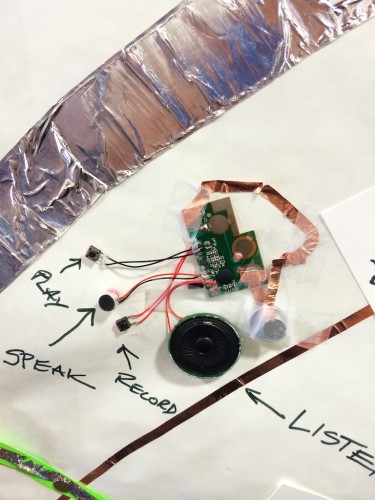Some of my friends have been asking me to make a list of cool toys/kits I’ve come across related to making, tinkering, and engineering. There are likely many other gadgets out there but I am only including those I have personally played with. I am also not including the “classics” like LEGOs, Tinkertoys, K’nex, etc because I assume most people already know about these.
For the most part, I think most of these toys would be appropriate for elementary and middle school kids (and if I think otherwise, I make a note of it). And hey, older kids might like playing with them too — I know I do!! For younger children, some of the kits might require adult help. But also know that I teach girls from grades 6-12 and don’t have kids of my own, so my opinions have not been exactly tested with younger children.
So without further ado, here is a sort-of “gift guide,” just in time for your holiday shopping, I hope!
Building/Design
- GoldieBlox – Well-designed construction sets that would appeal to kids who like to read because you build along with the storybook.
- Makedo – There is something so wonderfully simple about these kits, which really are just little tools and connectors for constructing with cardboard. Cardboard not provided but hey, we all get plenty of that stuff all the time, right?
- Imagination Supply Co – In full disclosure, this is a company co-founded by my colleague at school. At the same time, that means I’ve seen how these building kits were developed and even seen them tested with the students. After building, kids can do all sorts of things to customize them – hey, why not add some lights and such using paper circuits?!
- Roominate – Build dollhouses, wire them up with lights, fans, and other moving parts, and design furniture for the houses.
Electronics
- littlebits – Magnetic snap-together blocks for exploring circuits and interactive devices. Think of them as the electronics version of LEGOs. This passes my favorite rule-of-thumb of “low barrier, high ceiling” in that it is super easy to make something work but the possibilities are nearly endless when you dive deeper into it. Especially with the newer stuff like their Arduino bit, CloudBit, the Smart Home Kit and the Synth kit, there is something for everyone.
- Circuit Stickers – If you’ve read any of the previous posts recently, you know that I love paper circuits and basically have a not-so-secret crush on Jie Qi. These stickers were co-developed by her and the starter kit comes with a super adorable sketchbook with such activities as lighting up a jar with a firefly in it!
- LightUp – Like littlebits, these are magnetic blocks for exploring circuits. The advantage they have over littlebits is that their representation of circuits is a lot more realistic (you see the actual loop created by the parts) and they actually allow you to make mistakes, i.e. wire up LEDs backwards to learn about how LEDs have polarity. Lest you think this would be annoying, they also developed an augmented-reality iOS app to help you visualize current flow and debug circuits. And it looks like they have added programmable parts to their repertoire – haven’t played with these myself but sounds super cool!
- Circuit Scribe (conductive ink) – The basis of these kits is the conductive ink that allows you to literally draw out your circuits! I have not tested out this exact brand myself (I have tried out Bare Conductive’s version) but have heard good things about Circuit Scribe.
- Roominate – Build dollhouses, wire them up with lights, fans, and other moving parts, and design furniture for the houses.
Physical Computing
In general, these would be better for older kids because they require programming. There are ways to make these more accessible to younger kids by using blocks-based programming and adding shields and I have tried to mention these here as well.
- Makey Makey – Turn anything into an input for your computer from people to fruit to buckets of water! This may not sound like much but you can get seriously creative with even just this simple technology. You don’t have to program to use it (just plug it in and design your own game controller out of bananas, for example) but it plays really well with Scratch also.
- Hummingbird kits – These are the kits I’ve been recommending to schools all over the place due to the fact that it’s easy to get started with them. They make adding movement to projects really simple and you can program in a variety of languages, from visual, blocks-based languages like Snap (a variant of Scratch) to Python, Java, and Processing.
- Lilypad kits, FLORA, and GEMMA – All are platforms for exploring e-textiles/soft circuits/wearables. If you need a specific project to start with, how about this cute kit for adding sound to a plush toy?
- Arduino – Super powerful physical computing platform used by everyone from electronics hobbyists to installation artists. Definitely more for older kids unless you add on shields and parts from systems like Grove or TinkerKit.

